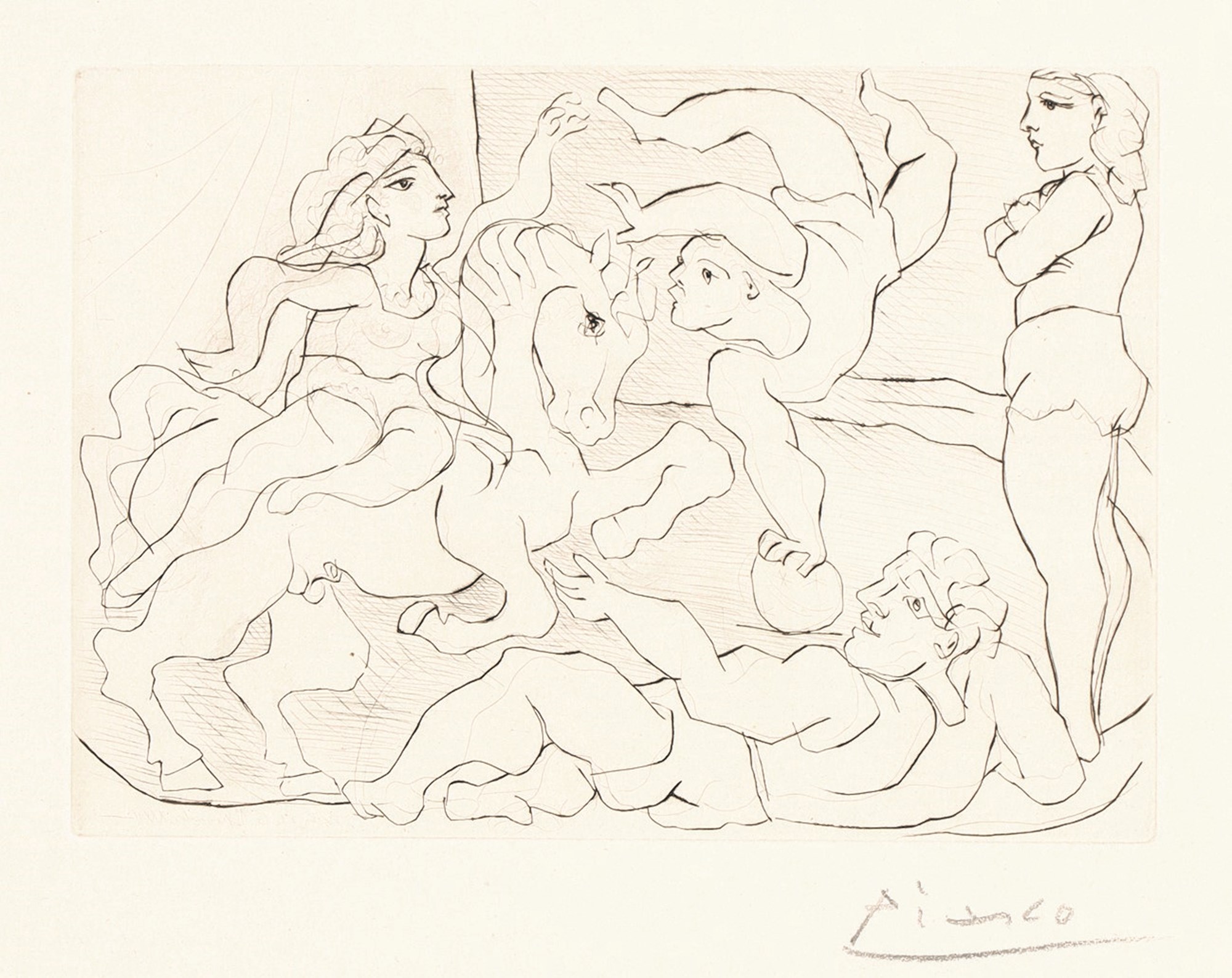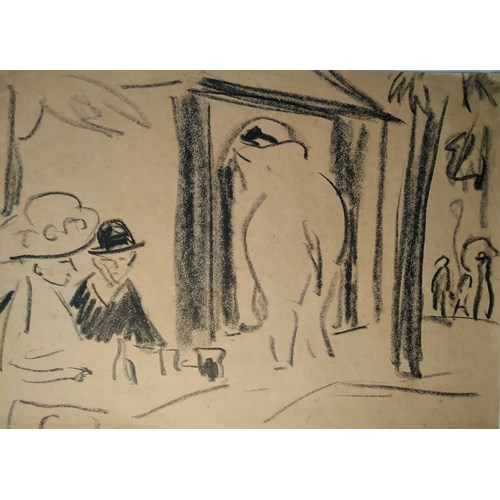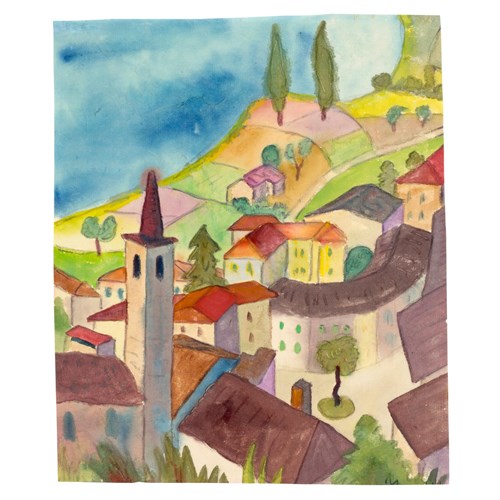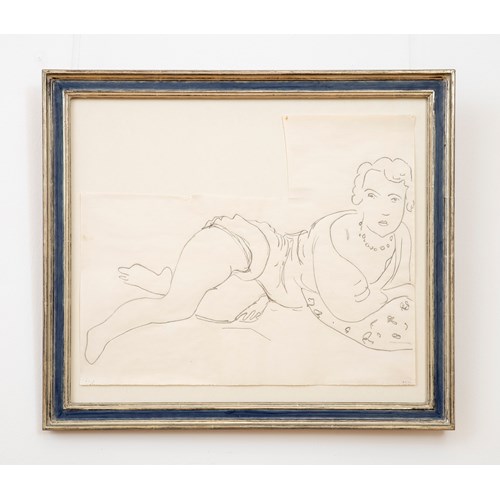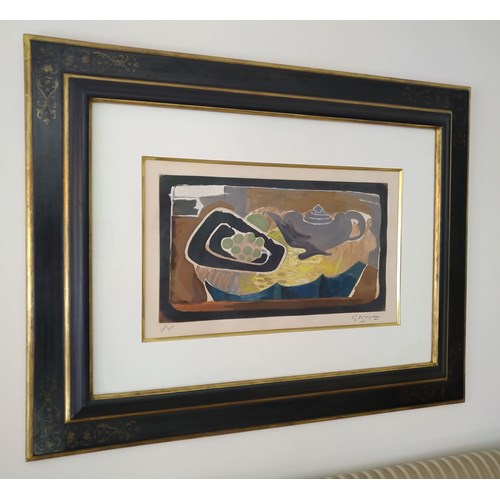Marketplace
Le Cirque (Répétition), Bloch 205. Baer 385, VI, B, d.
Pablo Picasso
Le Cirque (Répétition), Bloch 205. Baer 385, VI, B, d.
Date 1933
Period 20th century
Dimension 34.2 x 45 cm (13¹/₂ x 17³/₄ inches)
Print 17 from "Suite Vollard"
Picasso worked extensively on the set in the spring of 1933, and completed the suite in 1937. It took a further two years for the printmaker Roger Lacourière to finish printing the first 230 sets of the series, but the death of Vollard in 1939 and the Second World War meant that the sets only started coming onto the art market in the 1950s. The completed edition consisted of 250 copies on Montval paper watermarked "Vollard" or "Picasso", fifty copies on Montval paper watermarked "Papeterie Montgolfier à Montval", and three copies on parchment, hand-signed.
The works are not based on a literary source, and are not titled, although according to the Fundación Juan March, "Some of the themes have a remote origin in Honoré de Balzac's short story Le Chef-d'œuvre inconnu (The Unknown Masterpiece, 1831), which greatly impressed Picasso. It tells the story of a painter's efforts to capture life itself on canvas through the means of feminine beauty".[7] The works are inscribed by Picasso with the year month and day that he drew the image. Writing in the Daily Telegraph Richard Dorment claims that as Picasso took such a long time to create the suite, "the imagery and the emotional register of the prints constantly shifts to reflect Picasso's erotic and artistic obsessions, marital vicissitudes, and the darkening political situation in Europe...In the years Picasso worked on the series, fascism spread through Europe, and civil war erupted in Spain. These anxieties also found their way into the Vollard Suite, so that by the time you reach the end of the show and the last images of the blind minotaur, you feel that you are in a different emotional universe from the sunlit arcadia you encountered at the show's beginning".
The suite begins with prints exploring the theme of the sculptor's studio, Picasso's mistress, Marie-Thérèse Walter, is portrayed as a model lying in the arms of a bearded sculptor. Picasso had recently been inspired by Marie-Thérèse to create a series of monumental bronze heads in the neoclassical style.Picasso had also recently been commissioned by the publisher Albert Skira in 1928 to create original intaglio prints for his translation of Ovid's Metamorphoses, which appeared in 1931.
Dorment comments that a minotaur appears, joining in scenes of bacchic excess, but the minotaur is transformed from a gentle lover and bon vivant into a rapist and devourer of women, reflecting Picasso's turbulent relationships with Marie-Thérèse and his wife Olga. In a third transformation, the minotaur becomes pathetic, blind and impotent, he wanders by night, led by a little girl with the features of Marie-Thérèse. The final three prints from the suite are portraits of Vollard.
Picasso learned new techniques of etching during the suite, from relatively simple line etchings, through burin, dry point, aquatinting and sugar aquatinting learnt through Roger Lacourière in his workshop, this enabled him to achieve more painterly effects. Most of the prints were completed to Picasso's satisfaction in a single state, but others, especially the erotic compositions, exist in several states, fourteen in one case.
After book publications with Picasso prints enjoyed great success in the early 1930s, Picasso's interest in graphic art received new impetus and Vollard, who saw further opportunities for his publishing activities, ordered 100 plates from Picasso, which he finally owned in their entirety in 1937. The master printer Roger Lacourière printed the editions of the so-called "Suite Vollard" in 1939. "Ambroise Vollard died on 22 July 1939 as the result of a car accident. The majority of the edition of the Suite Vollard was acquired during the war by the graphics dealer Georges (sic!; correct: Henri M.) Petiet. The first series printed on paper and signed by Picasso went on sale in 1950" (Hans Bollinger, in: Pablo Picasso. Suite Vollard, Stuttgart 1956, p. XI).
Date: 1933
Period: 20th century
Signature: Signed in pencil on the lower right
Dimension: 34.2 x 45 cm (13¹/₂ x 17³/₄ inches)
Provenance: Private collection, Heidelberg, Germany.
Literature: Bloch 205. Baer 385, VI, B, d.
More artworks from the Gallery


